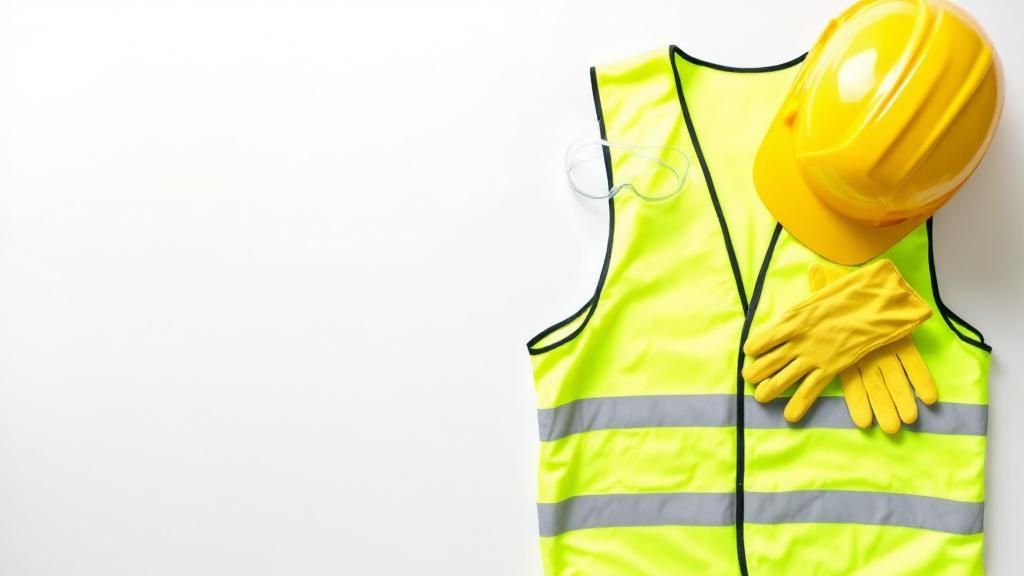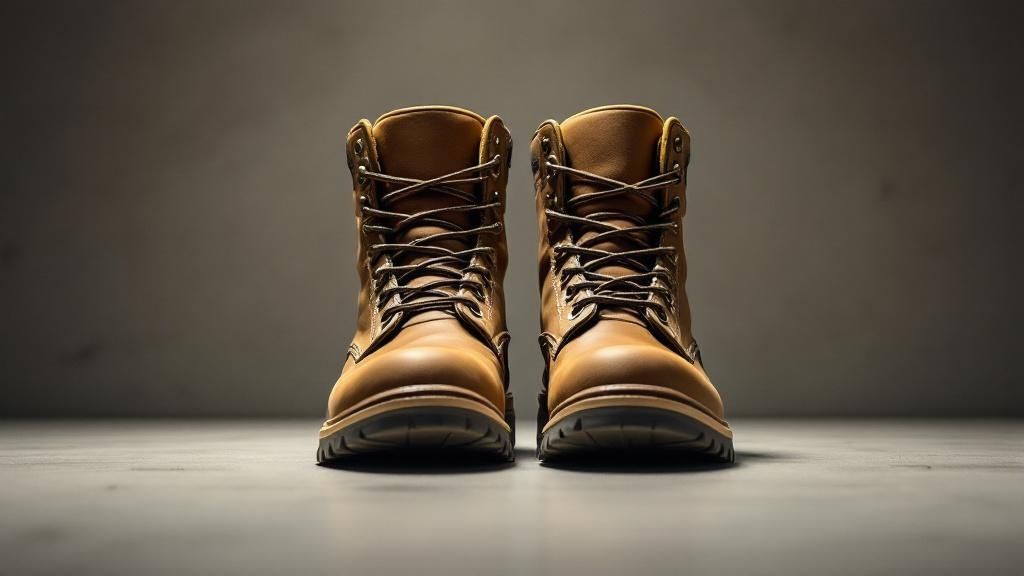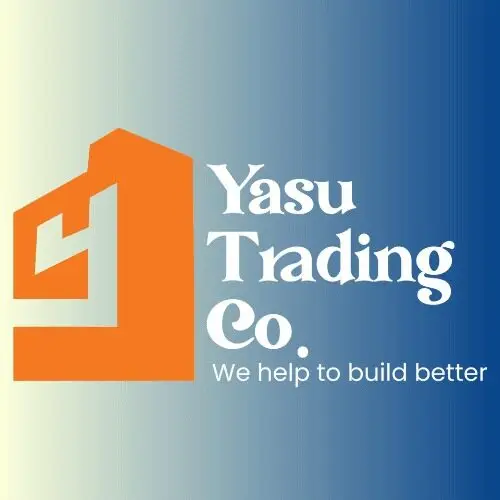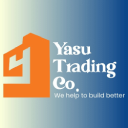Why UAE Construction Sites Need Strategic Safety Approaches

Picture this: you're overseeing a construction project in the UAE. The sun beats down relentlessly, pushing temperatures past 45°C. Suddenly, a sandstorm whips across the site, reducing visibility to near zero. In these demanding conditions, construction safety equipment isn't just a box to tick on a compliance checklist – it's absolutely essential for the well-being of your team and the success of your project. It demands a strategic, thoughtful approach.
The UAE presents unique safety challenges. The extreme heat and frequent sandstorms, combined with a diverse workforce, require careful consideration when choosing and fitting safety gear. For example, standard hard hats can become unbearably hot, tempting workers to remove them and increasing the risk of head injuries.
This highlights the need for a strategic approach. It's not just about providing any safety equipment; it's about providing the right equipment. This means choosing gear that's both protective and practical for the UAE’s climate. Think breathable fabrics, good ventilation, and designs that prioritize comfort in extreme heat.
Shifting our perspective on safety equipment is key. Instead of seeing it as a necessary expense, we should view it as a strategic investment. This change in mindset cultivates a culture of safety, boosting worker morale and minimizing costly accidents and project delays.
Think of it like equipping a Formula 1 team. The right gear not only protects the drivers, it also allows them to perform at their peak. Similarly, investing in high-quality, comfortable safety equipment empowers construction teams to work efficiently and with confidence.
The Growing Importance of Workplace Safety
This strategic approach to safety is gaining traction across the region. The workplace safety equipment market in the Middle East and Africa (MEA) generated about USD 1,493.8 million in 2024, and it's expected to grow at a 17.5% CAGR from 2025 to 2030. This growth is fueled by both stricter regulations and a growing awareness of the importance of occupational safety. Discover more insights
This upward trend reinforces the value of strategically integrating safety equipment into every aspect of construction projects in the UAE. By putting worker well-being first and taking a proactive approach to safety, construction companies can achieve project success while creating a safer environment for their teams.
Personal Protective Equipment That Workers Actually Want To Wear

This image shows a close-up of a modern hard hat. Notice the adjustable chin strap and the overall design. It highlights how safety gear can be designed with both protection and worker comfort in mind. We often focus on just ticking the compliance boxes, but the design and how comfortable the PPE is are really important too.
Let's be honest: even the most high-tech PPE is worthless if your team won't wear it. This is especially true in the UAE, where the heat and specific project demands call for practical and comfortable safety equipment. This article on construction site safety equipment has some related info. Think of it like buying top-of-the-line running shoes – they won't do you any good if they’re so uncomfortable they stay in the closet.
Comfort and Functionality: The Keys to PPE Adoption
So why do workers sometimes resist wearing PPE? Often, it boils down to discomfort and impracticality. Imagine trying to do precise work wearing thick gloves or a heavy hard hat under the intense UAE sun. This can lead to lower productivity and, more importantly, safety risks, as workers may remove uncomfortable PPE.
Savvy contractors understand this. They're increasingly prioritizing PPE that's both protective and comfortable. This means getting feedback directly from workers, understanding their needs, and investing in quality equipment designed for the specific challenges of UAE construction sites. For instance, lightweight, ventilated hard hats can make a huge difference in worker comfort in the heat, leading to better compliance.
Reframing PPE Selection
Choosing the right safety equipment for construction in the UAE requires a change in thinking. It's not just about meeting regulations; it's about investing in your team's well-being and productivity.
Think about this: including your team in the PPE selection process can dramatically improve acceptance. When workers have a voice in what they wear, they're much more likely to use it correctly and consistently. This sense of ownership translates directly into a safer work environment.
Practical Usability: A Category-by-Category Approach
Each type of PPE has its own usability challenges. Head protection needs to be light and well-ventilated to avoid discomfort in high temperatures. Respiratory equipment must be effective but shouldn't obstruct vision or communication. Hand protection has to strike a balance between dexterity and protection, allowing workers to do their jobs efficiently and safely.
To help illustrate these points, let's look at the following table:
Essential PPE Categories and Selection Criteria
Comprehensive comparison of PPE types, their specific applications, and key selection factors for UAE construction projects
| PPE Type | Primary Protection | UAE-Specific Considerations | Compliance Standards |
|---|---|---|---|
| Hard Hats | Head injuries from falling objects | Lightweight, ventilated design for heat | EN 397 |
| Safety Glasses | Eye injuries from projectiles, dust, chemicals | UV protection, anti-fogging properties | EN 166 |
| Gloves | Hand injuries from cuts, abrasions, chemicals | Breathable materials, suitable grip for specific tasks | EN 388, EN 374 |
| Respiratory Protection | Inhalation hazards like dust, fumes, gases | Appropriate filter type for specific hazards, comfortable fit for extended use | EN 149, EN 140 |
| Safety Footwear | Foot injuries from falling objects, punctures, slips | Heat-resistant soles, good ankle support | EN ISO 20345 |
| High-Visibility Clothing | Improves worker visibility in low-light conditions | Breathable fabrics, reflective strips | EN ISO 20471 |
This table highlights the critical PPE categories and the key considerations for selection in the UAE. Notice how each type has specific compliance standards and UAE-specific needs.
By considering these practical elements, you can make sure your team actually uses their safety gear. This leads to a safer and more productive worksite in the challenging conditions of UAE construction projects. This proactive approach contributes to project success and builds a stronger safety culture.
Fall Protection Systems That Actually Save Lives

This image shows workers high above the ground, relying on their fall protection equipment. It's a stark reminder of the dangers present on construction sites and the vital role of a well-thought-out safety system. Let's explore how we can move beyond just individual pieces of equipment and create true fall protection systems for every UAE construction project. Sadly, falls are a leading cause of death in construction, and often the issue isn't faulty equipment, but a lack of a comprehensive approach.
The Hierarchy of Fall Protection: More Than Just a Checklist
Many safety courses focus on the what – harnesses, lanyards, etc. But truly effective fall protection comes from understanding why and how these pieces work together. The hierarchy of fall protection gives us a framework for prioritizing safety measures. It's not just a box to check; it's a practical guide for building layers of safety.
Think of it like building a house. The strongest foundation is elimination: removing the fall hazard entirely. Can the work be done from the ground? If not, the next level is substitution: swapping out a risky task for a safer one. Could pre-assembled components reduce work at height?
Building Your Safety Net: Real-World Applications in the UAE
When elimination and substitution aren't possible, we move to passive fall protection, such as guardrails and safety nets. Picture a skyscraper rising in Dubai. Guardrails along the edge create a physical barrier, while safety nets below provide a vital backup. These passive systems are your first line of defense, always there without requiring any action from the worker.
Finally, we have personal fall arrest systems (PFAS). This includes harnesses, lanyards, and anchor points. These are the last resort, designed to stop a fall before it's fatal. But PFAS relies heavily on proper training and maintenance. A loose harness or a poorly anchored lanyard can turn a lifesaver into a hazard. In fact, the fall protection market in the Middle East and Africa is projected to hit US$ 633.0 million by 2030, fueled by stricter safety rules and a growing construction industry. Discover more insights
Transforming Equipment into Lifesavers Through Training
Effective training is the key to any fall protection system. Imagine a worker using a harness for the first time. Without training, they might connect the lanyard incorrectly, making the system useless. Good training teaches workers not just what to use, but how to use it right in different situations.
This is crucial in the UAE, where high winds and intense heat create unique difficulties. A worker in a harness under the scorching sun needs to know the dangers of dehydration and heatstroke. Training must cover these regional factors. It should also include emergency procedures, such as rescue plans for fallen workers. This preparation can dramatically reduce the impact of an accident. By combining thorough training with a systems-based approach, fall protection truly becomes a lifesaver on UAE construction sites.
Breathing Clean Air In Dusty Environments
Construction in the UAE presents unique respiratory challenges. Think of the swirling mix of concrete dust, welding fumes, chemical vapors, and ever-present desert sand. Protecting your team’s lungs isn’t just about ticking boxes for compliance; it's about their long-term health. Let's explore how to go beyond basic dust masks and create a truly effective respiratory protection plan.
This screenshot from the OSHA respiratory protection page shows just how many different types of respirators are available. It really highlights the need to choose the right protection for the specific hazards on your site. Just handing out any mask isn’t enough; it needs to be the correct one, and your team needs to know how to use it properly.
Choosing the Right Respirator: Not All Masks Are Created Equal
Standard dust masks offer minimal protection. Imagine trying to stop fine dust with a simple cloth barrier – it’s like trying to keep mosquitoes out with a chain-link fence. UAE construction sites need more robust solutions. That's why understanding the different respirator types is so crucial.
Filtering facepieces, often called N95 masks, offer better filtration for some particulates, but they’re not a catch-all. They won’t protect against gases or vapors, and a proper fit is essential. Half-mask and full-face respirators, with the right cartridges, offer broader protection. Think about it: a painter using solvents needs a different cartridge than a welder dealing with metal fumes.
For the toughest environments, powered air-purifying respirators (PAPRs) deliver a constant flow of filtered air. Imagine having your own portable clean air supply in a dusty, fume-filled environment. This makes breathing easier and more comfortable, especially in the UAE heat.
Integrating Air Quality Monitoring: Early Warning Systems for Invisible Threats
Air quality monitoring is like having a smoke detector for your lungs. By constantly checking the air for hazardous substances, you can set up an early warning system. This is especially vital for invisible threats like carbon monoxide or certain chemical vapors, which can be dangerous before workers even realize they’re exposed.
Building a Comprehensive Respiratory Protection Program in the UAE
A successful respiratory protection program is more than just handing out equipment. It requires a multi-faceted approach:
- Hazard Assessment: Identify every potential respiratory hazard on your site.
- Respirator Selection: Choose the right respirator for each specific hazard.
- Fit Testing: Make sure each worker gets a proper seal for maximum protection.
- Training: Teach workers how to use, maintain, and clean their respirators effectively.
- Medical Evaluation: Ensure workers are healthy enough to safely use respirators.
These steps are even more important in the UAE's climate. Think about the challenges of wearing a respirator in extreme heat. Your program needs to address heat stress, ensure proper hydration, and consider how workers will communicate when wearing full-face respirators. By taking a proactive and thorough approach, you can build a respiratory protection program that genuinely protects your team and their long-term health.
Electrical Safety Equipment Beyond Basic Compliance
Electricity on a construction site is a powerful resource, but it demands respect. Think of it like fire: an invaluable tool, yet capable of immense destruction if not handled carefully. Standard electrical safety practices are essential, but often insufficient given the unique challenges of a UAE construction site. Smart contractors go beyond the minimum, building layers of safety like the multiple defenses of a castle.
Ground Fault Protection and Arc Flash Equipment: Two Crucial Safeguards
Ground fault circuit interrupters (GFCIs) act as the first line of defense. They continuously monitor electrical current, instantly shutting off power if any leaks to the ground, thus preventing dangerous shocks. Imagine a worker accidentally severing a live wire – a GFCI would trip immediately, potentially saving their life.
Arc flash equipment protects against a different kind of electrical hazard: the intense heat and explosive energy released during an arc flash event. These events, triggered by short circuits or equipment malfunctions, can inflict severe burns. Specialized suits, gloves, and face shields create a protective barrier, similar to the gear worn by firefighters entering a burning building.
Lockout/Tagout: Preventing Accidental Energization
Lockout/tagout procedures provide another critical layer of protection. This system involves physically locking electrical equipment and clearly tagging it to prevent accidental startup during maintenance or repairs. Picture a technician working on a supposedly de-energized electrical panel. Without lockout/tagout, someone could unknowingly flip a switch, re-energizing the panel and endangering the technician. Lockout/tagout acts like a safety on a gun, ensuring it cannot be fired unintentionally. For more information related to local building practices, consider exploring resources like this one on Dubai building codes.
Choosing the Right Gear: Matching the Task
The most effective electrical safety equipment depends on the specific electrical environment. Temporary construction power has different requirements than the permanent electrical systems installed later. Think of it like selecting the right tools for various carpentry jobs. You wouldn't use a hammer to drive a screw, and similarly, you wouldn't use the same electrical safety approach for every task on a construction site.
Integrating Electrical Safety Into a Holistic Approach
Finally, electrical safety should be viewed as one piece of a larger safety puzzle. It must work in harmony with other safety measures, such as fall protection and respiratory protection, to create a genuinely safe environment. Imagine an orchestra: each instrument contributes its unique sound, but it's the combined effort that creates the beautiful music. By recognizing this interconnectedness in construction safety, we can create a workplace where everyone returns home safely at the end of the day.
Smart Safety Technology That Actually Works
Let's ditch the marketing buzz and talk about safety technology that's truly making a difference on construction sites right now. We're past the experimental phase and seeing how Internet of Things (IoT) sensors, wearable devices, and connected safety equipment are being used on a larger scale by construction companies who are ahead of the curve. Think about how power tools have changed over time: from simple hand drills to advanced cordless models. Technology has always improved the way we work. Now, that same shift is happening with safety.
Proximity Sensors: Creating a Virtual Safety Net
Imagine a bustling construction site, heavy equipment moving everywhere. Now, picture sensors on those machines that instantly warn operators—and even stop the equipment—if a worker gets too close. That's the power of proximity sensors, essentially building a virtual safety net around heavy equipment. This technology works alongside existing safety measures, adding an additional layer of defense against collisions and accidents.
Environmental Monitors: Your Site's Personal Weather Station
Working in the UAE climate presents unique safety challenges. Extreme heat and dust storms aren't just uncomfortable; they're real health risks. Environmental monitors are like having a weather station specifically for your site, giving you real-time updates on temperature, humidity, and air quality. This information helps you manage risks from heat stress, plan breaks during the hottest times of the day, and take steps to control dust when needed. Knowing what's happening in real-time lets you make smart choices to keep your team safe and productive, even in tough conditions.
Wearable Devices: Spotting Falls and Risky Actions
Wearable tech is no longer just about fitness trackers. Imagine smartwatches and vests with sensors that can detect falls, track a worker's posture, and even identify unsafe habits. For example, if a worker repeatedly bends at the waist instead of lifting properly, the device can spot this and allow for correction before a back injury occurs. This type of technology provides useful data to improve safety training and create a more proactive safety culture.
Practical Challenges and Finding the Right Fit
Putting smart safety tech into action does come with its challenges. Construction sites are harsh environments – dust, vibrations, and extreme temperatures can damage sensitive electronics. Plus, the cost of technology can be an obstacle for some companies. That’s why a strategic approach is important. It's not about adopting every new gadget on the market. It's about choosing technology that actually addresses your specific needs and making it work effectively with your current safety practices. Interestingly, the Middle East and Africa construction equipment market is expected to hit USD 7.62 billion by 2031, and some of this growth comes from incorporating tools like telematics, IoT sensors, and digital monitoring systems into safety equipment. Discover more insights here Successful contractors understand that technology is just one piece of the puzzle. It doesn't replace strong safety leadership and a real commitment to worker well-being. By combining the best of both worlds—smart technology and proven safety practices—you can build a truly effective safety system that protects your team and helps your projects succeed.
Building Maintenance Systems That Keep Equipment Reliable
Effective safety programs in the UAE aren't just about ticking boxes. They're built on the understanding that reliable construction safety equipment needs consistent upkeep. Think of it like your car: regular maintenance keeps it running smoothly and prevents expensive repairs down the line. This same idea applies to safety equipment, especially given the tough UAE climate.
Why Maintenance Matters in the UAE
The UAE's extreme heat, sand, and humidity can really take a toll on construction safety equipment. These conditions speed up wear and tear, making regular maintenance essential. A frayed harness, a cracked hard hat, or a malfunctioning respirator can be the difference between a safe day and a disaster.
Balancing Cost Control with Safety Reliability
Maintaining safety equipment does cost money, but these costs are small compared to the potential expenses of an accident. Consider the costs associated with lost time, medical bills, and possible legal issues resulting from equipment failure. A solid maintenance program isn't an expense; it's an investment in preventing much larger costs in the future. Learn more about setting up a schedule with our preventive maintenance schedule template.
Building a Maintenance Program That Works
A practical maintenance program needs two key elements: daily care by your crew and regular professional inspections. Just like checking your car's oil and tire pressure, workers should inspect their PPE every day for visible damage. This encourages a sense of responsibility and ownership.
But daily checks aren't enough. Professional inspections, carried out by trained experts, are essential to find hidden problems and ensure the equipment meets the required standards. This is where specialized knowledge is key, like checking the structural integrity of a harness or the filter effectiveness of a respirator.
Predictive Maintenance: Stopping Problems Before They Start
Today's technology allows for predictive maintenance, using data to foresee problems before they happen. Imagine sensors on a crane that track its use and warn you when a part is nearing the end of its life. This allows for proactive replacements, preventing breakdowns and potential accidents.
Documentation: Protecting Your Workers and Your Projects
Keeping detailed maintenance records is vital. They demonstrate your commitment to safety, protecting both your workers and your company. Think of it as a medical history—it documents what's been done and when, offering a valuable record if an incident occurs.
To help you stay organized, we've put together a sample maintenance schedule and checklist. You can adapt this to fit your specific needs and the types of equipment used on your sites.
A well-maintained piece of equipment is a reliable piece of equipment. And reliable equipment is the cornerstone of a safe and productive worksite.
| Equipment Type | Inspection Frequency | Key Inspection Points | Replacement Indicators |
|---|---|---|---|
| Safety Harnesses | Daily/Before each use | Webbing, stitching, buckles, D-rings | Fraying, cuts, tears, deformed buckles |
| Hard Hats | Daily/Before each use | Shell, suspension system | Cracks, dents, damage to suspension |
| Safety Glasses | Daily/Before each use | Lenses, frames | Scratches, cracks, loose frames |
| Respirators | Before each use/As recommended by manufacturer | Filters, straps, valves | Damaged filters, worn straps, faulty valves |
| Safety Shoes | Daily | Steel toe, sole, laces | Worn sole, damaged steel toe, broken laces |
This table provides a starting point for your own comprehensive maintenance program. Remember to consult manufacturer guidelines for specific recommendations.
By implementing these maintenance strategies, you build a safety culture that protects your team, keeps your projects on track, and contributes to a more productive and profitable operation. Remember, reliable safety equipment isn't accidental; it takes a continuous and deliberate commitment to maintenance.
Ready to equip your construction site with reliable safety equipment? Visit Yasu Trading Co. LLC today for a comprehensive range of high-quality safety products and expert advice.


